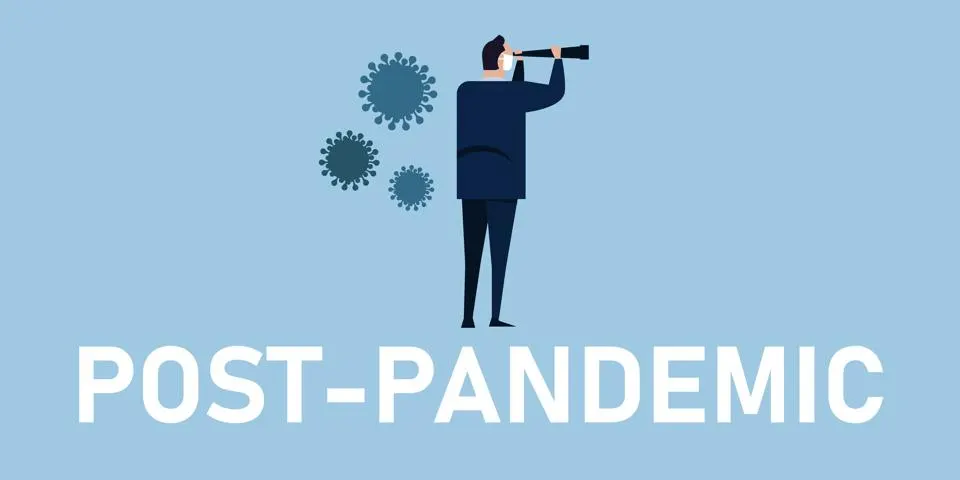 The COVID-19 pandemic has brought about a new way of life – the “New Normal.” It is a term used to describe the changes in behaviour and lifestyle that have emerged due to the virus. Understanding the New Normal is necessitated by the fact that it has had a significant impact on human behaviour and the way we interact with one another. Science is behind the New Normal in the sense that it is based on scientific research and data. It is not just some arbitrary way of life brought about by the pandemic; rather, it is a well-researched approach that has taken into account the best scientific findings. The New Normal has had a considerable impact on human behaviour. People are more conscious of their health and hygiene, and social distancing has become the norm. It has also paved the way for remote working, online learning, and telemedicine. As we navigate through this new way of life, it is essential to understand the changes that have taken place and how we can adapt to them.
The COVID-19 pandemic has brought about a new way of life – the “New Normal.” It is a term used to describe the changes in behaviour and lifestyle that have emerged due to the virus. Understanding the New Normal is necessitated by the fact that it has had a significant impact on human behaviour and the way we interact with one another. Science is behind the New Normal in the sense that it is based on scientific research and data. It is not just some arbitrary way of life brought about by the pandemic; rather, it is a well-researched approach that has taken into account the best scientific findings. The New Normal has had a considerable impact on human behaviour. People are more conscious of their health and hygiene, and social distancing has become the norm. It has also paved the way for remote working, online learning, and telemedicine. As we navigate through this new way of life, it is essential to understand the changes that have taken place and how we can adapt to them.
Social Distancing
The COVID-19 pandemic has brought a significant change in human behaviour. This change is what we refer to as the ‘New Normal.’ Social distancing has become a crucial aspect of the ‘New Normal’ lifestyle. It is not only a government mandate but also an essential precautionary measure for everyone to follow.
Understanding Social Distancing: Social distancing is the practice of reducing close contact between people to minimize the spread of contagious diseases. It involves maintaining a distance of at least six feet from anyone who is not part of your household. Social distancing also requires avoiding large gatherings and public places where there is a high risk of exposure.
Importance of Social Distancing during Pandemics: The success of social distancing measures in reducing the spread of pandemics has been significant. It enables health care systems to better manage an epidemic by reducing the number of infections and admissions to hospitals, especially in the early stages of a pandemic.
Effectiveness of Social Distancing in Pandemics: Studies have shown that social distancing measures are highly effective in reducing the spread of viral infections. A review of 15 studies conducted during the H1N1 influenza pandemic of 2009 found that social distancing measures were associated with a significant reduction in the risk of infection. The success of social distancing in controlling the spread of COVID-19 pandemic has been a testament to its effectiveness. Social distancing is vital in the fight against pandemics.
While it may seem inconvenient, it is necessary to protect ourselves and our community. So, let us embrace the ‘New Normal’ and make social distancing a part of our daily lives.
Remote Work
Working from home in the ‘New Normal’ has become a common trend. Employers have discovered new ways to ensure their employees work from home and stay productive. Remote work has its advantages, including saving time and money on commuting, avoiding office politics, and being more productive. It allows one to work in a comfortable environment and have a better work-life balance. However, remote work has its disadvantages too. It can lead to work-life imbalance, heighten feelings of isolation, and blur the lines between work and personal time. Remote workers may find themselves overworking, leading to burnout and frustration. To stay productive while working from home, one can start with setting up a designated workspace. This will help in keeping the work area separate from the personal area. Also, establish a daily routine to keep a balance between work and personal life. Planning small breaks in between work and taking a hearty lunch break can refresh one’s mind and body. Another tip is to avoid getting distracted by social media. With the comfort of working from home, it is easy to fall into the trap of hourly scrolling. Staying engaged in collaborative activities with colleagues and attending online meetings can help in avoiding such distractions. To wrap it up, remote work can be both beneficial and challenging. With the right planning and discipline, one can stay productive and enjoy the benefits of working from home.
Digital Learning
Digital learning is the new education system that has emerged as a result of the pandemic. It has revolutionized the traditional way of teaching, providing a more customized and interactive learning experience for students. The impact of digital learning on education has been tremendous, as it enables students to access quality education from anywhere and at any time. One of the biggest advantages of digital learning is that it offers flexibility. Students can learn according to their own pace and style, which helps them in better understanding and retention of the concepts. It also offers a wide range of multimedia tools for teaching, which enhances the learning experience. However, digital learning has some disadvantages too, such as the lack of social interaction among students and the requirement of necessary technical infrastructure. Overall, the benefits of digital learning outweigh its drawbacks, making it a valuable and essential system of education for the present and the future.
Health and Wellness
We all know that a healthy mind resides in a healthy body, and the pandemic has made us realise the importance of health and wellness more than ever. Physical exercise is essential at a time when we are restricted to our homes. Not only does it keep us physically fit, but it also boosts our immunity, which is crucial in fighting the virus. However, the pandemic has also taken a toll on our mental health, leading to anxiety and depression. Seeking professional help, if needed, is highly recommended. Besides, practising yoga and meditation can have a calming effect on our minds. It helps us deal with stress, anxiety, and depression, paving the way for a happier, healthier lifestyle.
Business and Economy
Businesses have undergone a dramatic transformation due to the ‘New Normal.’ The pandemic has impacted different sectors of the economy, with some businesses finding it challenging to stay afloat. While others, with digital capabilities, continue to thrive. The situation has called for new business models, cost-cutting measures and an overhaul of marketing strategies. To survive the pandemic, companies have to be innovative, agile and responsive to market changes. As the future remains uncertain, planning for future black swan events has become part of business strategy.
Conclusion
The ‘New Normal’ has brought several challenges and opportunities. Businesses have had to adapt to the changing landscape and work remotely, while individuals have had to prioritize health and wellness. This pandemic has also highlighted the importance of digital learning and mental health care. The future brings the promise of better pandemic management, but it is essential to prepare by investing in healthcare infrastructure and research. Let us continue to stay resilient and embrace the ‘New Normal’ with optimism.







